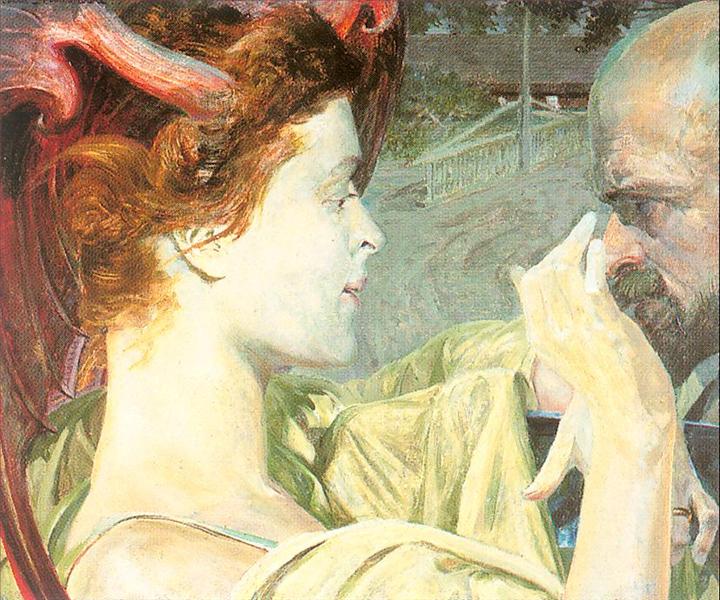Description
Jacek Malczewski's work (1911) is a powerful example of the exploration of symbolism and the conceptual depth that characterizes the Polish artist. Malczewski, recognized as a master Of the symbolism in Poland, visual meditation on death, a recurring theme in its work that reflects both the existential and mystical tradition of its culture.
When observing the composition of "death", one feels immediately attracted to the central figure of the skeleton, which stands solemnly in the foreground of the work. This figure not only embodies death literally, but also symbolizes fragility and inevitable arrival of the end for all human beings. The way Malczewski presents the skeleton is remarkable: instead of a mere terror symbol, the artist manages to confer an almost poetic dignity, which modifies the viewer's relationship with the figure of death. The skeleton posture, with an extended hand, can be interpreted as an invitation to acceptance and reflection on the fate that we all share.
The background of the painting is composed of a misty and ethereal landscape that complements the seriousness of the subject. The atmosphere in blue and gray tones evokes a feeling of melancholy and restlessness, while the touches of light that are filtered suggest the possibility of transcendence. This use of color is fundamental in the work, since Malczewski uses a sophisticated palette to express an emotional variety that invites the viewer to contemplate its own finitude.
The iconography present in "death" is also rich and multifaceted. Jacek Malczewski was a member of the Polish Youth Movement and entered the symbolisms of literature and mysticism that resonated with the cultural traditions of Poland. In this painting, its representation of death goes beyond the physical and goes into the scope of the life cycle. The skeletal figure remembers the viewer who, despite its inevitable end, existence is a trip that deserves to be lived intensely.
It should be noted that the work also reveals the influence of the artistic currents of their time, especially the symbolism that permeated the visual arts at the end of the 19th and early twentieth centuries. As well as other artists of the same era they used their work to explore philosophical and existential themes, Malczewski addresses death from a perspective that mixes introspection with the evocation of the cultural tradition of their country.
In conclusion, "death" (1911) is not only a visual representation of the end of life, but a work that invites contemplation and reflection on the meaning of existence. Jacek Malczewski, through his ability to combine symbols with a distilled use of color and composition, creates an artistic experience that resonates deeply. The painting confronts us with one of the most inescapable truths of life: death is a cycle that defines our humanity and, in its powerful representation, Malczewski reminds us that each life has its own history in the vast immensity of time.
KUADROS ©, a famous paint on your wall.
Hand-made oil painting reproductions, with the quality of professional artists and the distinctive seal of KUADROS ©.
Art reproduction service with satisfaction guarantee. If you are not completely satisfied with the replica of your painting, we refund your money 100%.

